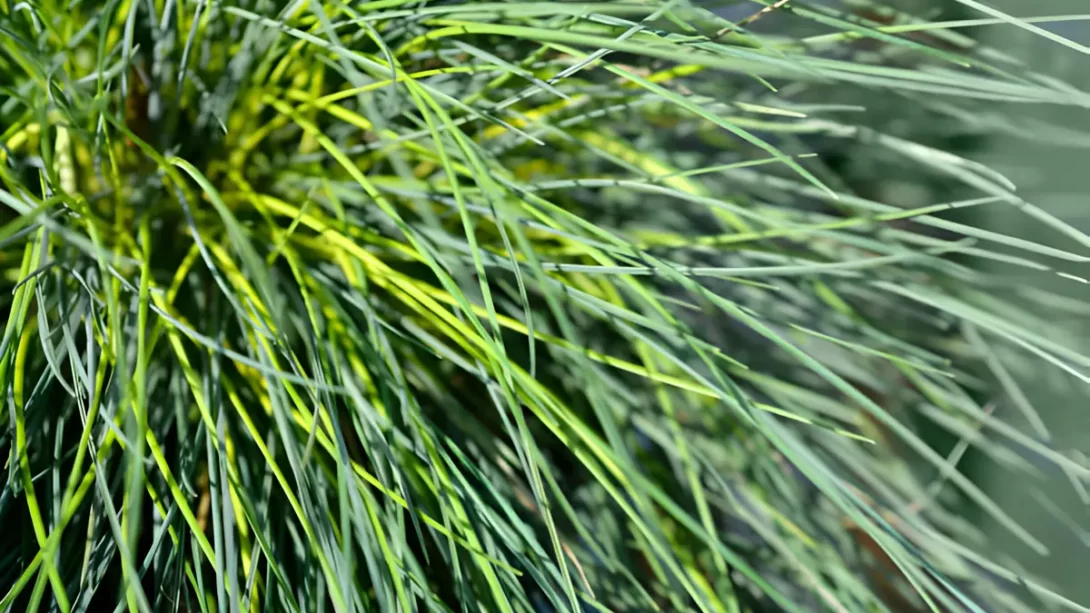Fescue grass, known for its hardiness and aesthetic appeal, is a popular choice for lawns and landscapes. Understanding the optimal planting time for fescue is crucial for establishing a healthy, vibrant lawn. This article provides a detailed guide on when to plant fescue, taking into account various environmental and climatic factors to ensure the best results for your lawn.
Fescue Grass
Fescue grasses, which include varieties like tall fescue and fine fescue, are known for their adaptability to a range of climates and soil conditions. Tall fescue is particularly valued for its drought tolerance and ability to thrive in both sunny and partially shaded areas. Fine fescues, on the other hand, are preferred for shaded areas and have a finer blade texture. These grasses are commonly used in residential lawns, commercial landscapes, and for erosion control due to their robust root systems.
Climate and Soil Requirements for Fescue
Fescue grasses perform best in temperate climates but can adapt to various environmental conditions. They prefer well-draining soil with a neutral to slightly acidic pH. Before planting fescue, it’s important to conduct a soil test to determine the soil’s nutrient composition and pH level. Amending the soil based on these test results can create an ideal growing environment for fescue.
Best Time to Plant Fescue
The best time to plant fescue largely depends on the specific climate of the area. In general, fescue is best planted during its peak growth periods in the fall and spring.
- Fall Planting: This is the ideal time, especially in cooler climates. Planting fescue in the fall allows the grass to establish itself before the winter, leading to a stronger lawn in the spring. The cooler temperatures and natural rainfall in fall help in seed germination and root development.
- Spring Planting: In regions where winters are harsh, planting fescue in early spring is also an option. However, spring-planted fescue may require more watering and care to establish, as it competes with weeds and faces warmer temperatures earlier in its growth cycle.
Considering regional climate variations is crucial when determining the best planting time for fescue in your area. For example, in the southern United States, fall planting is preferred due to the hot summer temperatures that can stress young fescue plants.
Preparing the Site for Fescue Planting
Proper site preparation is essential for successful fescue establishment. Follow these steps to prepare your lawn:
- Soil Testing: Conduct a soil test to determine pH and nutrient levels. Fescue prefers a pH between 5.5 and 7.0. Amend the soil based on the test results.
- Clearing the Area: Remove any debris, rocks, and weeds from the planting site. This ensures that the fescue seeds have direct contact with the soil, which is crucial for germination.
- Tilling and Soil Amendment: Loosen the soil to a depth of about 4-6 inches. Incorporate organic matter or soil amendments if needed to improve soil structure and fertility.
- Leveling the Ground: Smooth and level the soil surface to avoid water pooling. A uniform surface also helps in even seed distribution and establishment.
Planting Fescue: Seed vs. Sod
When planting fescue, you have two main options: seeding or laying sod.
- Seeding: This is the most common and cost-effective method. It involves evenly spreading fescue seeds over the prepared soil. The key to successful seeding is to maintain consistent moisture in the soil until the seeds germinate and the seedlings establish. Seeding is best done in the fall or early spring.
- Sod: Laying sod provides an instant lawn and is less susceptible to erosion and weed competition. It is more expensive than seeding but can be done almost any time during the growing season. Proper soil preparation and immediate watering are crucial for sod establishment.
Care and Maintenance of Fescue Grass
After planting fescue, whether from seed or sod, appropriate care is essential:
- Watering: Newly planted fescue needs regular watering to ensure the soil remains consistently moist. Avoid over-watering, which can lead to fungal diseases.
- Fertilizing: Apply a starter fertilizer at planting and follow up with regular fertilization based on soil test recommendations. Be cautious with nitrogen application, as excessive amounts can harm young fescue plants.
- Mowing: Begin mowing when the fescue reaches about 3-4 inches in height. Always use a sharp blade and do not cut more than one-third of the grass height at a time to avoid stressing the plant.
- Weed Control: Keep an eye out for weeds and remove them promptly. Consider using a pre-emergent herbicide if weeds are a persistent problem.
Proper care and maintenance during the early stages of growth will ensure your fescue lawn establishes well and remains healthy and lush.
Common Challenges in Growing Fescue
Growing fescue, especially in diverse climates like those found in different parts of the country, can present several challenges:
- Pest and Disease Management: Fescue is susceptible to various pests and diseases, such as brown patch, rust, and grubs. Regular monitoring and timely intervention with appropriate fungicides or pesticides can help manage these issues.
- Climate-Related Stress: In areas with hot summers, fescue may undergo stress, leading to thinning and browning. Proper watering and mowing practices are crucial to help the grass withstand heat stress.
- Soil Compaction: Heavy foot traffic can lead to soil compaction, affecting fescue’s root growth. Aerating the lawn annually can help alleviate compaction.
Seasonal Lawn Care Tips
Caring for a fescue lawn involves seasonal activities to maintain its health and appearance:
- Spring: Focus on fertilization, pre-emergent weed control, and regular mowing. It’s also a good time to aerate if the soil is compacted.
- Summer: Ensure adequate watering, especially during dry periods. Mow at a higher setting to help the grass retain moisture.
- Fall: This is the ideal time for overseeding to fill in bare spots and thicken the lawn. Apply a balanced fertilizer to prepare the grass for winter.
- Winter: Minimize foot traffic on the lawn to prevent damage to the dormant grass.
Conclusion
Planting fescue at the right time and providing it with the proper care and maintenance are key to cultivating a healthy, lush lawn. In areas like Georgia, understanding the local climate and soil conditions, and adapting your gardening practices accordingly, can significantly impact the success of your fescue lawn. Whether you’re a seasoned gardener or a beginner, the rewards of a well-maintained fescue lawn are plenty – from its aesthetic appeal to its environmental benefits. With patience and attention to detail, your fescue lawn can become a vibrant and enduring part of your landscape.



